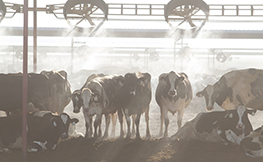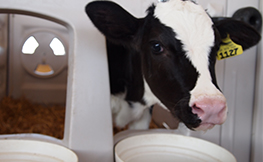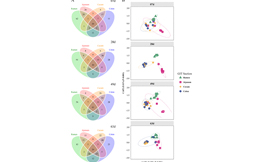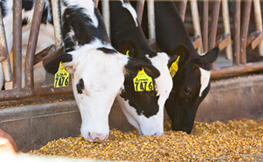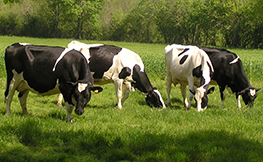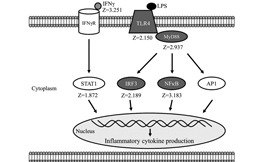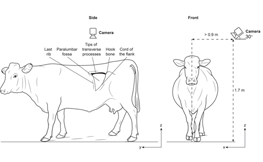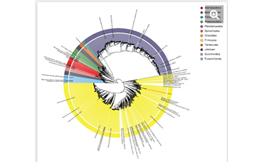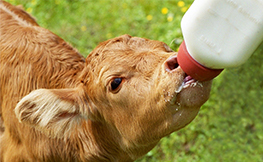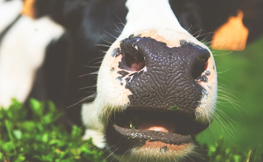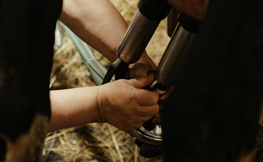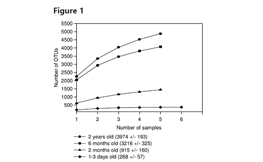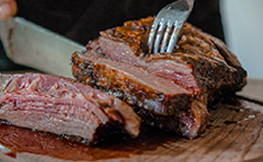
Estimation of fatty acid profiles in meat using rumen microbiome information from beef cattle
By R Roehe, M Martínez-Álvaro, M D Auffret, C-A Duthie, R D Stewart, M Watson, R J Dewhurst
Published on 01/04/2019
The use of relative rumen microbial gene abundances to estimate meat fatty acids profiles has great potential as proxy traits for breeding. This also provides the opportunity to be combined with estimation of methane emissions and feed conversion efficiency using the same sample and methodology.
By J. Laporta, F.C. Ferreira, V. Ouellet, B. Dado-Senn, A.K. Almeida, A. De Vries, G.E. Dahl
Late-gestation heat stress exerts carryover effects on at least two generations. This quantifies the need for providing heat abatement... ReadBy Yo-Han Kim, Rie Nagata, Natsuki Ohtani, Toshihiro Ichijo, Kentaro Ikuta, and Shigeru Sato
This study demonstrated that feeding dietary forage alleviates subacute ruminal acidosis due to diurnal changes in ruminal pH. ReadBy Juliana Dias, Marcos Inácio Marcondes, Shirley Motta de Souza, Barbara Cardoso da Mata e Silva, Melline Fontes Noronha, Rafael Tassinari Resende, Fernanda Samarini Machado, Hilário Cuquetto Mantovani, Kimberly A. Dill-McFarland, Garret Suen
ReadBy N. J. Urie, J. E. Lombard, C. B. Shivley, C. A. Kopral, A. E. Adams, T. J. Earleywine, J. D. Olson, and F. B. Garry
If you’re not familiar with this piece, it’s a must-read and an important reference for factors contributing to the mortality and... ReadBy Melanie Schären, Kerstin Kiri, Susanne Riede, Mark Gardener, Ulrich Meyer, Jürgen Hummel, Tim Urich, Gerhard Breves, and Sven Dänicke
ReadBy Yo-Han KIM, Noriyuki TOJI, Keiichiro KIZAKI, Kei TAKEMURA, Shiro KUSHIBIKI, Shigeru SATO
In this 2019 paper published in The Journal of Veterinary Medical Science, the authors found feeding the only starter to calves decreases... ReadBy X. Song, P. P. J. van der Tol, P. W. G. Groot Koerkamp, and E. A. M. Bokkers
This study demonstrated a low-cost 3D vision system that could automatically and remotely assess the reticulo-ruminal motility of dairy... ReadBy Robert D. Stewart, Marc D. Auffret, Amanda Warr, Alan W. Walker, Rainer Roehe, Mick Watson
This work offers a comprehensive analysis of more than 6.5 terabytes of Illumina and Nanopore sequence data, including assembly of... ReadBy H. M. Hammon, W. Liermann, D. Frieten, and C. Koch
The authors of this paper posit that a change in early calf management is needed to follow the natural processes of preweaning calf... ReadBy D.C. Sockett
Deep nasopharyngeal swabs are a simple and safe technique that has been validated as a way to test for bovine respiratory disease complex... ReadBy Yifan Zhong, Mingyuan Xue, Jianxin Liu
This research suggests that specific rumen microbes are altered in cows with high SCCs. Cows with high SCCs showed lowered milk and... ReadBy Elie Jami, Adi Israel, Assaf Kotser & Itzhak Mizrahi
The authors of this 2013 Nature publication describe the changes occurring in the rumen ecosystem after birth. Read